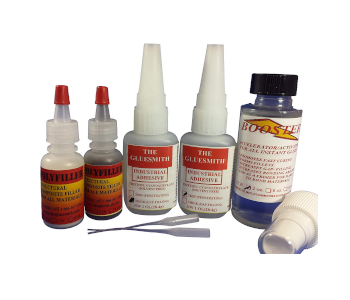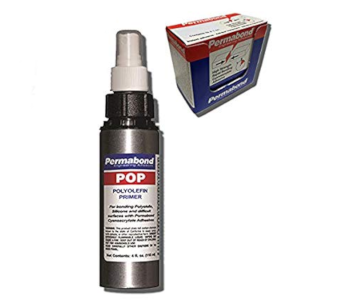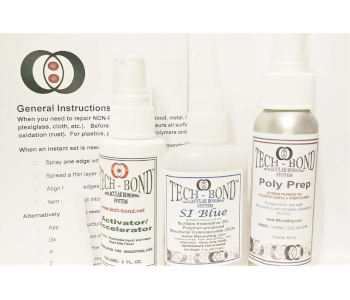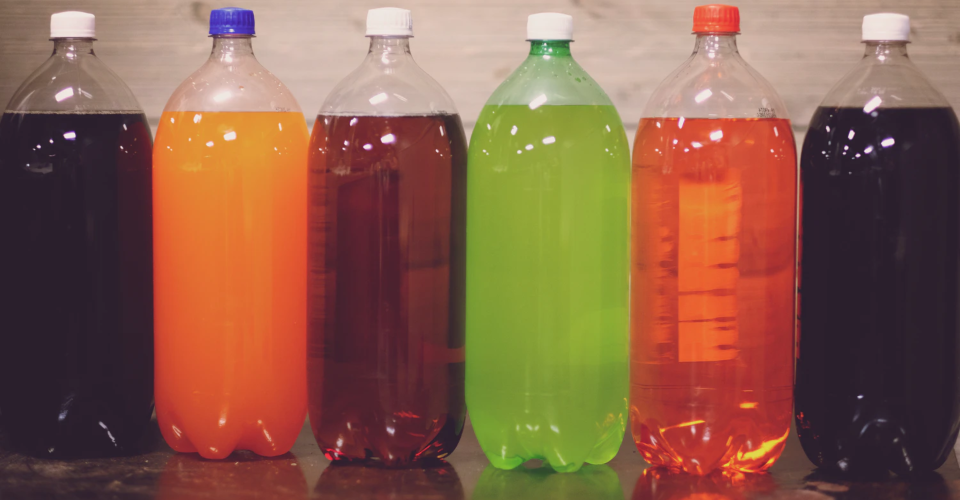Adhesive Options for Polyethylene
Polyethylene, despite its usefulness as a packaging material in its HDPE and LDPE forms, can be a notoriously difficult material to work with. The problem with polyethylene comes up if you need to bond it to another material or to bond two pieces of polyethylene together.
What is it about polyethylene that makes it impervious to standard adhesives? If I need to bond polyethylene to other materials, what are my options? Spoiler alert: there isn’t a simple, one-step method that can achieve this goal. However, it’s still possible, and we’ll show you how.
What makes polyethylene difficult to bond with?
When applying any adhesive or paint to a solid, how well the solid “accepts” any coating can be gauged by its surface energy. The surface energy of a solid is a measure of the energy it takes to create a surface on the material. The adhesive, in our case, would account for the “surface” and the polyethylene will be the “material.”
To successfully create a surface on the layer of the material, the surface must be energetically less favorable than the bulk of the material. If this were not the case, the driving force would tend to separate the material from the surface.
The surface energy of any material is an intrinsic property determined by its chemical composition and structure. The problem with polyethylene is that it has one of the lowest surface energy values of any polymer. Its surface energy is much lower compared to commons plastics like ABS, PVC, or polycarbonate. A closer comparison would be PTFE or Teflon, a plastic used particularly because it is such a non-stick material.
For this reason, the post-processing of any polyethylene part can be particularly complicated. It’s not always a disadvantage, of course. Because of polyethylene’s non-stick properties, it is commonly used as packaging material for tapes and adhesives. However, making polyethylene bond to itself or to any other material typically takes industrial-scale measures.
Can I modify the surface of polyethylene so that it bonds better?
To be able to apply any adhesive (or paint, if desired) on a surface of polyethylene, the surface tension of the substance you’re applying must be lower than polyethylene’s surface energy. If such a substance isn’t available, then your only option would be to somehow modify the properties of the polyethylene material and make it more conducive to bonding.
There are several methods of surface preparation suitable for polyethylene, but they require advanced equipment and a lot of energy. Plasma activation methods, for example, make use of high-voltage electrodes to create an electric arc and inducing plasma processing. The overall effect is a very fine modification of the surface topography and the deposition of functional chemical groups.
The problem with any of the surface modification methods is that it’s only practical if done at an industrial or professional scale. If you only need to work with polyethylene parts as a hobby or as a casual business, then buying a special adhesive made to work with polyethylene is going to be a far better option.
Adhesive products for polyethylene
Ready-to-use adhesives made to work with polyethylene achieve the effect via different means. In most cases, the manufacturer will recommend that you prepare the surface of the polyethylene by sanding it with coarse sandpaper. Most adhesives will also have an accelerator component, which means that bonding will be achieved by curing of the compound, and not just simple drying. Depending on the product, curing can take several hours to a few days.
1. Gluesmith Plastic Repair Glue System

For sheer versatility, our top pick would be this plastic repair glue kit from Gluesmith. This kit has just about any type of glue you’ll need for any material. And yes, that list includes tough to bind plastics like polyethylene and polypropylene.
More than just a primer or adhesive designed solely for polyethylene, the kit contains a thin glue with superior wetting properties and a thick glue for adhesion needs that require filling some gaps. If you need the dried adhesive to be extremely tough, you can add the polyfill powder to the adhesive, which makes it epoxy-like properties.
To enhance the bonding properties of any of the adhesives, you can spray on the accelerator into your polyethylene material. The great thing about this kit is that the accelerator can be used with either one of the thin or thick adhesives. You can even add the polyfill powder if needed without compromising the bonding performance.
With a variety of applicators and spray caps, this glue kit from Gluesmith is certainly one of the most reliable and versatile adhesion options that will work even for materials that are difficult to bond. It’s tough to imagine ever needing any other adhesives once you’ve tried the Gluesmith plastic repair glue kit.
2. Permabond POP Plastics Primer

Permabond is a pretty well-known name in the field of engineering adhesives, so their POP primer is certainly one of the top candidates for bonding your polyethylene parts. POP stands for polyolefin primer, which should already be enough to tell you that this product was designed precisely for untreated polyethylene.
The primer is sprayed onto the surface of your polyethylene part before bonding with super glue or a cyanoacrylate resin adhesive. The super-thin layer of primer serves to lower the surface tension of the adhesive to improve its wetting properties. The best thing about using this primer is that it’s possible to finish the curing process in just a few seconds. You can also use a resin with a longer setting time should you need more time to move the parts around after the adhesive has been applied.
The downside of this product is that it’s just a primer – you still need to buy the adhesive separately. However, you can also look at it as an advantage if you just need a primer to work with the adhesives that you already have in your workspace.
3. Tech-bond Basic Poly Kit

The Basic Poly Kit from Tech-bond is another all-in-one kit that includes the basic adhesive and other compounds that enhance the bonding process. The process is a little more complicated, although the results appear to be well worth the effort.
To start off, there are two additional compounds on top of the adhesive. One is the adhesion promoter which you’ll need to apply liberally to the surface of the polyethylene with the aim of saturating it. You will then need to spray a light coat of the accelerator. The adhesive, which is a cyanoacrylate resin, will then be applied to the part to be bonded before the two parts are pressed together firmly.
According to the instructions from Tech-bond, it’s best to sand the surface of the polyethylene part using rough sandpaper. They also recommend subjecting the layer of cured adhesive to heat treatment to ensure that curing proceeds completely. Heat treatment can be done by using a heat gun or a standard hairdryer. Even with heat treatment, maximum strength will only be developed for at least a month.
Other glue kits don’t require the additional measures required by the Techbond Poly Kit, but they presumably lead to better results. If you need your bonded parts to be up to par with industrial standards, then this product may be worth considering.
Final thoughts
It may sound surprising given how common LDPE and HDPE products are, but polyethylene is considered by many to be quite a challenging material to work with. In this article, we tackled a few ways of dealing with its low surface energy to apply adhesives.
Since surface preparation is impractical for small-scale polyethylene applications, we’ll have to resort to specially designed adhesives. It takes quite a bit of work because there seems to be no way to apply adhesives to polyethylene using a single-step method. The adhesives for polyethylene are also a little on the expensive side.

